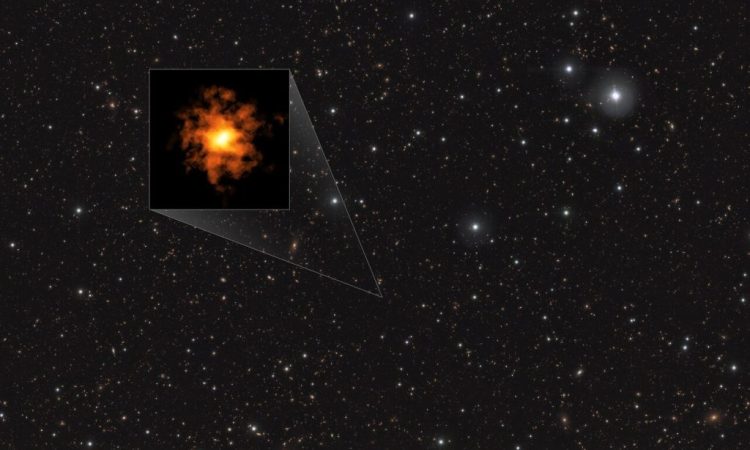
Researchers have discovered the most distant early Milky Way-like galaxy ever observed to date.
Thanks to a new series of observations carried out using the partnership’s telescopes THAT (the European Southern Observatory) was spiral galaxy discoveredsimilar to the Milky Way, most distant ever observed. Called REBELS-25, this looks as orderly as today’s galaxies, but we see it as it was when the Universe was just 700 million years old. This is surprising since, according to our current understanding of galaxy formation, such early galaxies are expected to appear more chaotic. The rotation and structure of REBELS-25 were revealed using the Atacama Large Millimeter/submillimeter Array (ALMA), of which ESO is a partner.
Primordial galaxies
The galaxies we see today have come a long way from their chaotic, musty counterparts that astronomers typically observe in the. “According to our understanding of galaxy formation, we expect most early galaxies to be small and messy-looking,” says Jacqueline Hodge, an astronomer at Leiden University in the Netherlands, and co-author of the study.
These primordial, disordered galaxies merge together and then evolve into more uniform shapes at an incredibly slow pace. Current theories suggest that for a galaxy to be as ordered as ours, a rotating disk with structures as ordered as spiral arms, billions of years of evolution must have passed. The REBELS-25 detection, however, calls this time scale into question.
In the study, accepted for publication in Monthly Notices of the Royal Astronomical Society, astronomers found that REBELS-25 is the most distant strongly rotating disk galaxy ever discovered. The was emitted when the Universe was only 700 million years old, a paltry five percent of its current age (13.8 billion), making REBELS-25’s orderly rotation unexpected.
“Seeing a galaxy with such similarities to our own Milky Way, which is strongly dominated by rotation, challenges our understanding of how quickly galaxies in the early Universe evolve into the ordered galaxies of the,” says Lucie Rowland, a doctoral student at Leiden University and first author of the study.
Unprecedented findings
REBELS-25 was initially detected in previous observations by the same team, also conducted with ALMA, located in Chile. At the time, it was an exciting discovery, showing hints of rotation, but the resolution of the data was not high enough just to be sure. To correctly discern the structure and motion of the galaxy, the team performed follow-up observations with ALMA at a higher resolution, which confirmed its record-breaking nature.
“ALMA is the only existing telescope with the sensitivity and resolution to achieve this,” says Renske Smit, a researcher at Liverpool John Moores University in the UK and also a co-author of the study.
Surprisingly, the data also suggested , such as an elongated central bar and even spiral arms, although more observations will be needed to confirm this. “Finding further evidence of more evolved structures would be an exciting discovery, as it would be the most distant galaxy with such structures observed to date,” says Rowland.
These future REBELS-25 observations, along with other discoveries of primordially rotating galaxies, will potentially transform our understanding of the formation of primordial galaxies and the evolution of the Universe as a whole.
In its own small way, Passione Astronomia helps you understand how the universe works. And the universe works better if the people who are part of it are well informed: if they have read nonsense, lies, poisons, then it ends up as it ends up. It’s not going very well right now. This is why it is important that someone explains things well. Passion Astronomy does its best. !
Read more

